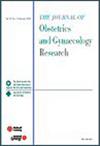Clinical analysis of the effect of embryonic outcomes in carriers of chromosomal translocations from different parental sources: A retrospective cohort study of 178 couples
Abstract
Objective
To investigate the impact of parental origin (paternal vs. maternal) on embryonic developmental potential and clinical outcomes in carriers of balanced chromosomal translocations; to provide evidence for sex-specific genetic counseling.
Study Design
A total of 178 couples undergoing preimplantation genetic testing for structural rearangement treatment for balanced chromosomal translocations at the Center for Reproductive Medicine, First Hospital of Lanzhou University, between January 2019 and December 2022 were retrospectively included. They were stratified into paternal translocation (n = 75) and maternal translocation (n = 103) groups based on parental origin.
Results
(1) Sperm quality parameters (progressive motility, immotile sperm, and normal morphology rate) were significantly lower in paternal translocation carriers compared to maternal translocation carriers. (2) Paternal translocation carriers demonstrated significantly higher blastocyst formation rates (59.82% vs. 52.35%, p = 0.006) and high-quality blastocyst rates (38.61% vs. 31.07%, p = 0.034) than maternal translocation carriers. (3) The transferable embryo rate was significantly lower in the maternal translocation group than in the paternal group (p = 0.004). Among abnormal embryos, the maternal group exhibited higher rates of both parental-origin abnormalities (p = 0.012) and complex abnormalities (p = 0.021) compared to the paternal group. (4) The 2:2 alternate segregation rate was significantly higher in the paternal translocation group than in the maternal group (29.67% vs. 39.83%, p = 0.002). Conversely, the 3:1 segregation rate was significantly higher in the maternal translocation group than in the paternal group (26.33% vs. 17.35%, p = 0.002).
Conclusions
Embryos derived from paternal translocation carriers demonstrated significantly higher developmental potential than those from maternal carriers. The elevated rate of de novo chromosomal abnormalities in embryos of maternal translocation carriers underscores the necessity for genetic counseling that differentiates between translocation-associated and incidental genetic anomalies.





 求助内容:
求助内容: 应助结果提醒方式:
应助结果提醒方式:


